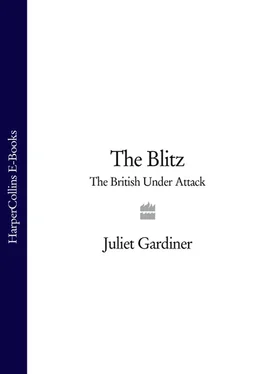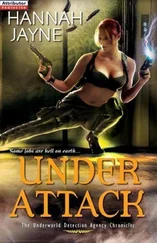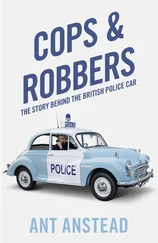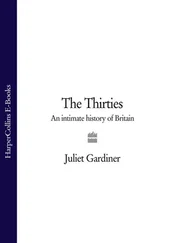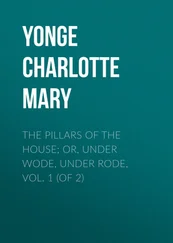1 ...8 9 10 12 13 14 ...32 I went with him. We found many thousands sheltering in a school in the heart of the bombed area. I took a good look at the school. From the first glance it seemed to me ominous of disaster. In the passages and classrooms were mothers nursing their babies. There were blind, crippled and aged people … Whole families were sitting in queues perched on pitiful baggage waiting desperately for coaches to take them away from the terror of the bombs which had been raining down on them … these unfortunate people had been told to be ready for the coaches at three o’clock. Hours later the coaches had not arrived. ‘The Guvnor’ and I heard women, the mothers of young children, protesting with violence and with tears about the delay. Men were cursing the officials who only knew that coaches were expected. ‘Where are we going?’ ‘Can’t we walk there?’ ‘We’ll take a bus!’ ‘There’s a lorry we can borrow!’ The crowds clamoured for help, for information, for reassurance. But the officials knew no answer other than to offer a cup of tea.
One mother complained that her children had been forbidden to play in the playground … [the official showed me why]. In the playground behind the school was a crater. The school was, in fact, a bulging dangerous ruin. The bombs which had rendered these people homeless had also struck the building selected by the authorities as a ‘Rest Centre’… the school had already been bombed at the same time as ‘the Guv’nor’s’ church had been bombed. So had the parish church … So had other buildings and streets within a direct line with it. And then I knew that Sunday afternoon, that as sure as night would follow day, the bombers would come again with the darkness, and that the school would be bombed.
And so it was. ‘Filled with foreboding’, Calder ‘hastened back to central London. Three times I warned the Whitehall authorities during that evening that the people must be got away before more bombs dropped and certain disaster overtook them. Local folk back at the school were making equally frantic efforts to force the local authorities to act.’ But the displaced East Enders were still huddled in the ‘shelterless school’ at 8 p.m. on Monday when the alert sounded. At 3.45 on the morning of Tuesday, 10 September ‘the inevitable bomb’ scored a direct hit on South Hallsville School. Half the building was demolished, and hundreds of tons of masonry crashed down on its occupants. Rescue workers, frantically digging and scrabbling in the ruins, tried to free the injured, while a cordon was thrown around the area to keep people from seeing what was happening, and the censor warned the press that there were to be no reports or photographs of the tragedy, so injurious was it feared that it would be to the morale of the already disquieted city.
The rescue services dug for twelve days, trying to find survivors under the slabs of concrete and piles of bricks that filled the crater where the bomb had fallen, before they had to concede defeat. The dead – or parts of the dead – were carefully transported to an emergency morgue at a nearby swimming pool. Soon the rumours flew as fast as the fires had taken hold: hundreds were dead, and the authorities had ordered the site to be concreted over with bodies still entombed in the wreckage. Calder was incandescent with rage at the authorities, not only for failing to organise transport for the refugees, but also for failing to provide what he and others, including most vociferously the scientist and author of the book ARP , J.B.S. Haldane, had urged was essential for London: sufficient deep shelters to provide safety for all those in vulnerable areas. Calder went again to the scene. ‘I saw the gaping bomb crater, where stood a school used as a shelter centre, containing still uncounted bodies – families wiped out while they waited for transport which never came … I saw the rescue men descending perilously into it, with ropes around them, saw them pause, every now and then, in a hushed painful silence listening for the sound of the living, saw the tomb of whole families … I spoke to the men, fathers of families, who had been cursing on the Sunday. They were speechless and numbed by the horror of it.’
It has never been established why the coaches did not arrive: maybe the address they had been given was inadequate. The George, a well-known pub in the area from which coaches from all over London set off for Essex, had been designated as the rendezvous point – but there are more pubs than one in the capital called The George. Maybe the coaches had been misdirected to Camden Town, rather than Canning Town. Or maybe the drivers, caught in the raid and seeing the devastation in the East End, simply turned back. Certainly it was a grievous dereliction of duty on the part of the West Ham authorities to leave so many people unprotected in the eye of the raid. And whatever the reason, the result was fatal – 450 dead, Calder claimed in the bitter account that appeared the following year in his admonitory book The Lesson of London. West Ham Council announced the death toll as seventy-three, but locals still believe that nearer two hundred people perished in South Hallsville School on the third night of the blitz. Many of the bodies remained unclaimed, despite the fact that the Metropolitan Police circulated photographs in the area of those it was still possible to identify, and were buried in a communal grave in the East London Cemetery at Plaistow.
‘They call it crater London now,’ read the trenchant journalist Hannen Swaffer’s column in the Daily Herald. Traffic in the capital was at a standstill, with streets roped off because of unexploded bombs, fires still smouldering and many City businesses closed. It was the King’s turn to go to the people on Monday, 9 September. Accompanied by Captain Euan Wallace, Senior Regional Commissioner for Civil Defence, George VI paid a visit to Shoreditch, Bethnal Green, Stepney and Poplar before crossing the river to see the devastation of Bermondsey, Southwark and Lambeth. In places a path had to be hastily cleared through the debris so the royal party could proceed. At one point the King peered down into a crater ringed with ‘backless houses, showing bedrooms and sitting rooms with furniture shattered, and every curtain hanging in shreds’. Twenty houses had stood there the previous night, but there was now nothing but a hole large enough to hold three or four buses. George VI – not at all displeased to have a clear-cut wartime role at last, as part of the ‘morale-boosting’ posse – conscientiously insisted on a thorough tour, taking in the docks as well as the devastated streets. Later that day, as he was working in his study at Buckingham Palace, a random bomb fell on the north side of the building, but did not explode until early the next morning, shattering windows and badly damaging the swimming pool. Each night the King and Queen trekked to Windsor Castle in an armoured Daimler. It had been planned that they would go to Worcester in the event of an invasion, and the by-now elderly Queen Mary, the Queen Mother, had decamped the previous year to Badminton, the Gloucestershire residence of her niece, the Duchess of Beaufort.
Monday night’s raids lasted for nearly ten hours, killing 370 people and injuring 1,400. But the next night, for the first time, it seemed as if the fightback had begun. ‘We had depended on anti-aircraft guns … and apart from a solitary salvo loosed at the beginning of the raids, no gun had been shot in our defence … we felt like sitting ducks and no mistake,’ wrote Violet Regan, wife of an ARP warden, who had sheltered in a Poplar school throughout the raids. ‘It was difficult for civilians to understand why there should be no more than spasmodic gunfire [from the anti-aircraft (AA, or ‘Ack-Ack’, from the staccato noise they made) guns * ] when hordes of enemy aircraft streamed over London most of the night,’ wrote the Commander-in-Chief of Anti-Aircraft Command, General Sir Frederick Pile. ‘The intricate and enormous problems of night shooting were unknown to them, and impossible to explain. Londoners wanted to hear the guns shoot back; they wanted to feel that even if aircraft were not being brought down, at least the pilots were being made uncomfortable. It was abundantly apparent,’ the C-in-C concluded, ‘that every effort must be made to defend the Londoner more effectively, and to uphold his morale in so doing.’
Читать дальше
